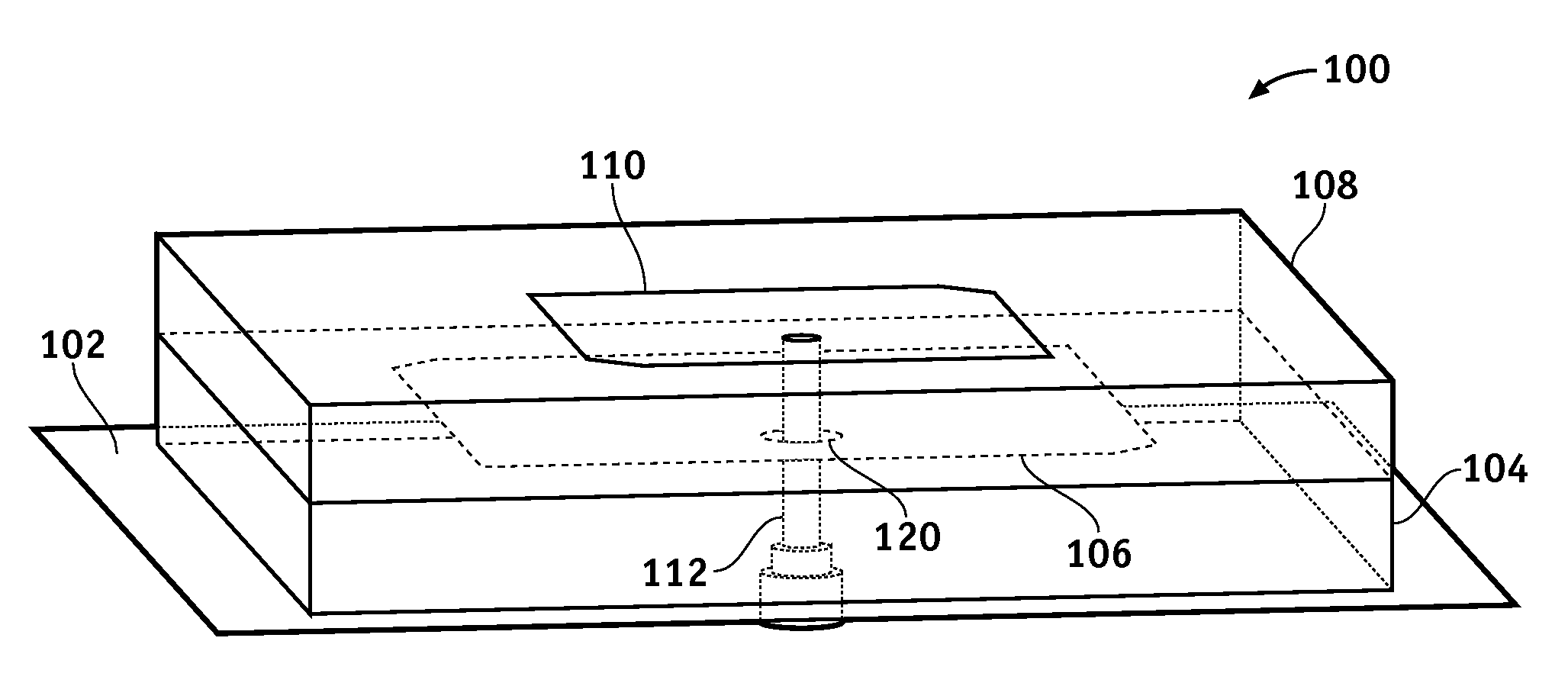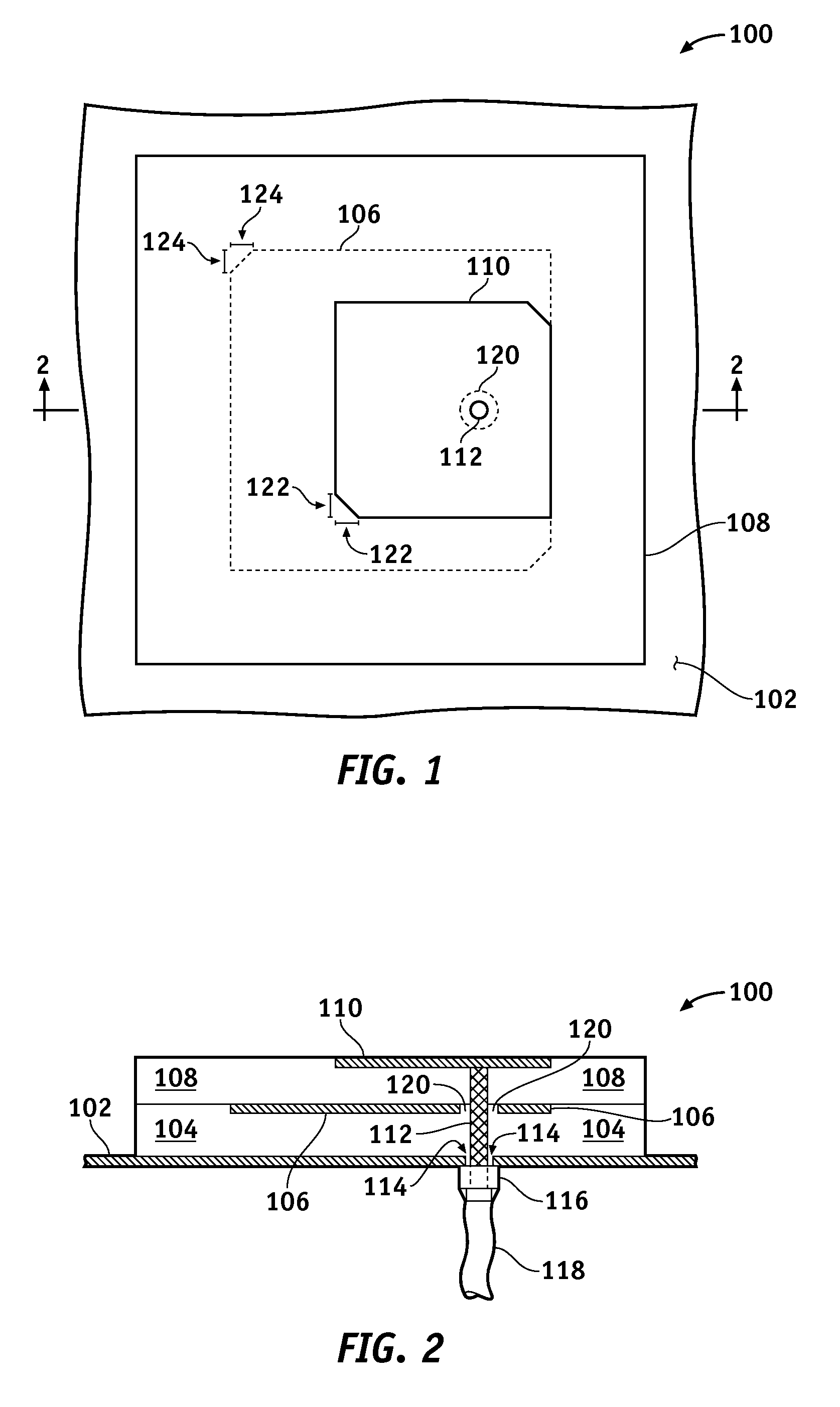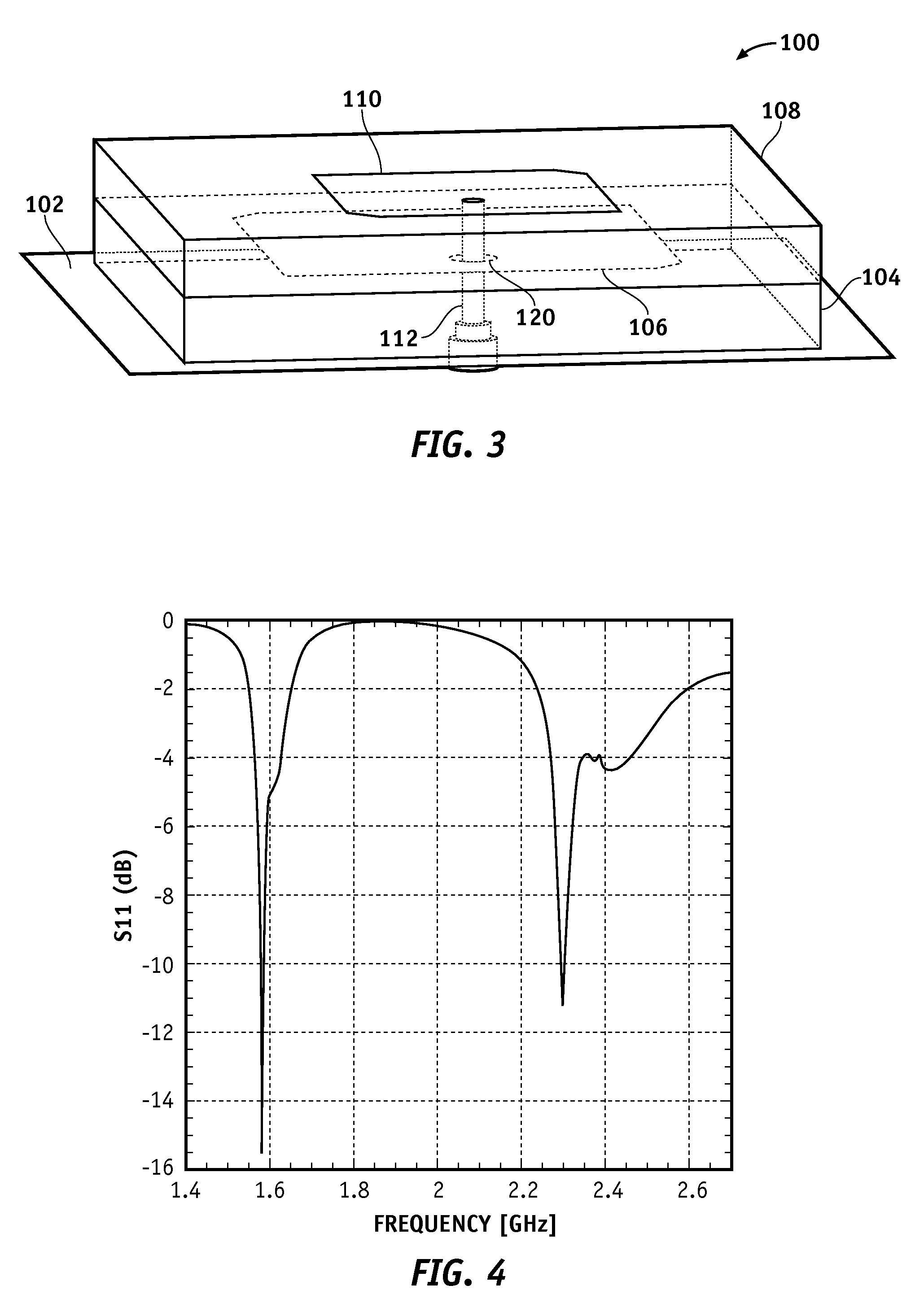Dual Band Stacked Patch Antenna
a patch antenna and dual band technology, applied in the field of patch antennas, can solve the problems of reducing the overall performance of each antenna, not providing a desirable amount of vlp gain for terrestrial sdars signals, and often affecting the performance of the two antennas, so as to reduce the final assembly time, reduce manufacturing costs, and simplify the effect of construction
- Summary
- Abstract
- Description
- Claims
- Application Information
AI Technical Summary
Benefits of technology
Problems solved by technology
Method used
Image
Examples
Embodiment Construction
[0021]The following detailed description is merely exemplary in nature and is not intended to limit the invention or the application and uses of the invention. Furthermore, there is no intention to be bound by any expressed or implied theory presented in the preceding technical field, background, brief summary or the following detailed description.
[0022]For the sake of brevity, conventional techniques and aspects related to GPS systems, SDARS systems, RF / microwave antenna design, and RF / microwave signal propagation may not be described in detail herein. In addition, those skilled in the art will appreciate that embodiments of the dual band patch antennas described herein may be practiced in conjunction with any number of applications and installations at any set of two or more frequency bands, and that the vehicular deployment described herein is merely one suitable example.
[0023]The following description refers to elements or nodes or features being “connected” or “coupled” togethe...
PUM
 Login to View More
Login to View More Abstract
Description
Claims
Application Information
 Login to View More
Login to View More - R&D
- Intellectual Property
- Life Sciences
- Materials
- Tech Scout
- Unparalleled Data Quality
- Higher Quality Content
- 60% Fewer Hallucinations
Browse by: Latest US Patents, China's latest patents, Technical Efficacy Thesaurus, Application Domain, Technology Topic, Popular Technical Reports.
© 2025 PatSnap. All rights reserved.Legal|Privacy policy|Modern Slavery Act Transparency Statement|Sitemap|About US| Contact US: help@patsnap.com



